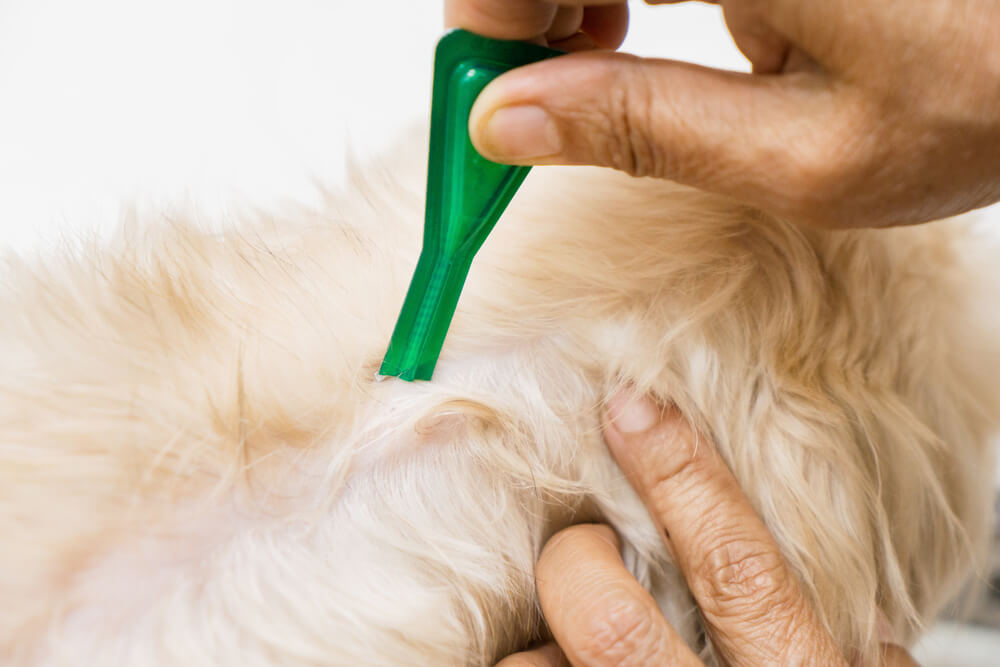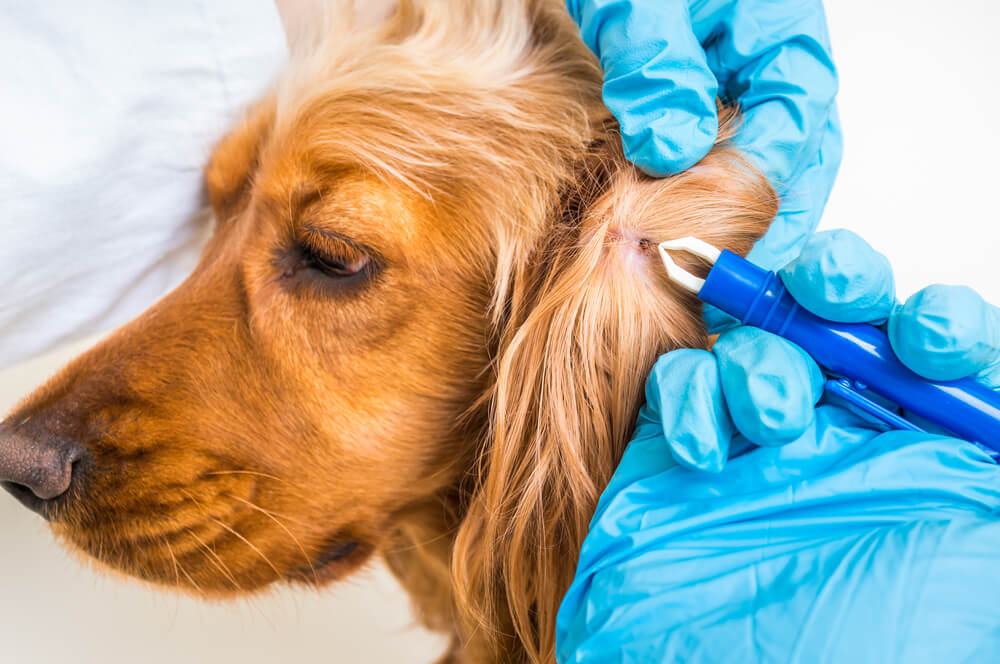How to Remove a Tick from Your Dog?

Table of Contents
Listen To The Article
Introduction to How to Remove a Tick from Your Dog?
- Around their face
- Around their neck
- Inside their ears
- Under their arms and legs
- Between their toes

Tools You’ll Need to Remove a Tick
- Latex or rubber gloves
- Extra lighting and a magnifying glass
- Tweezers or a tick removal tool
- Isopropyl alcohol
- Jar or small container with a lid
- Triple antibiotic ointment
- Treats

Steps for Removing Ticks From Dogs
Use caution when trying to remove ticks that are attached near your dog’s eyes, around their mouth, and inside their ears.
If the tick is in an area that seems uncomfortable for your dog, don’t be afraid to call your veterinarian and ask for assistance.
Use the treats as distractions and rewards for your dog during the tick removal process.
Here’s how to get ticks off dogs using tweezers or a tick removal tool.
Using Tweezers to Remove Ticks
If you are using tweezers to remove a tick, follow these steps:
Try to grab the base of the tick as close to your dog’s skin as possible.
Try not to pinch your dog!
Also make sure you are not squeezing the tick too tightly, as it may crush the tick and make it more difficult to remove.
Slowly begin to pull the tick out from your dog’s skin in a steady motion.
Do not twist or jerk your hand while pulling the tick out.
The goal is to pull the head of the tick out of your dog’s skin while it is still attached to its body.
Once the tick has been removed, examine it to make sure all body parts have been removed from your dog’s skin.
Using a Tick Removal Tool
If you are using a tick removal tool like the Tick Twister follow these steps:
Gently “hook” the body of the tick in the notch of the tool.
Rotate the tool clockwise or counterclockwise until the tick detaches from the skin (do not pull on the tick while it is still attached).
Once the tick has detached, lift the tick away from the skin.
Examine the tick to make sure all body parts have been removed from your dog’s skin.
What to Do If the Head of the Tick Gets Stuck in Your Dog’s Skin?
If the head of the tick is still embedded in your dog’s skin after the body has been removed, there’s no need to panic.
Do not try to dig the head of the tick out of your dog’s skin.
This will cause more irritation and inflammation and will open the skin to infection.
Instead, take your dog to the veterinarian to remove any remaining embedded pieces of the tick.

How Long Can Ticks Survive Without A Host?
I’ve often wondered about this because I’ve sometimes dropped a tick after removing it so I looked it up.
Now I’ll be a lot less worried that there’s a tick wandering around my house looking for someone to bite.
This is what I found out about deer ticks and most other hard ticks.
They can dry out and die very quickly if humidity is less than 90%.
Most won’t survive 24 hours and will often die within 8 hours.
On moist clothing in a laundry hamper they might survive 2 or 3 days, or longer if they’ve recently had a blood meal.
But what if you bring ticks home on your clothes?
Well, here’s what a study by the University of Vermont found putting your clothes in the dryer for 5 minutes on high heat will kill ticks.
If you wash your clothes first, the water temperature needs to be above 115°F to kill them. If a tick survives the wash cycle, put the clothes in the dryer.
Dry for 70 minutes on low heat or 50 minutes on high heat. This study used black-legged (deer) ticks so other ticks may respond differently.
Of course, keeping ticks off your dog in the first place is the best strategy.
But it’s always worthwhile taking the time to check him regularly for ticks.
If you remove them promptly, the likelihood of your dog getting a tick-borne disease is very low.

How to Kill a Tick
Once the tick has safely been removed, place it in a jar or small container that is filled with isopropyl alcohol and put the lid on the jar. The isopropyl alcohol will kill the tick.
Many veterinarians recommend keeping the tick in the container in case your dog starts to show any signs of illness.
Different types of ticks can carry different diseases, so having your veterinarian identify the tick may help with a diagnosis.
Disinfect the Skin
After disposing of the tick, you can tend to the tick bite area.
Gently clean the site of tick attachment with soap and water.
Vetericyn Plus Antimicrobial Hydrogel spray can be applied to the area as well.
Continue to watch the area where the tick was attached.
If you notice any redness or inflammation, contact your veterinarian immediately.

Preventing Tick Bites
Now you know the best way to remove a tick, you’ll need to know how to prevent tick bites in the future.
A lot of flea treatments available on the current market actually work against ticks too, and these can be purchased from your vet practice.
Some spot-on or tablets are tick repellents (preventing ticks attaching in the first place), whilst others will kill the tick once it has attached and fed but do not prevent its initial attachment.
Speak to your vet for further advice on the most appropriate product to use on your dog.
By ensuring that their flea and tick treatments are kept up to date, you can help to ensure your dog doesn’t get bitten in the future, thus removing the chance of disease or infection.
Additionally, brushing your dog regularly can also help with tick management as not only will it enable you to keep a close eye out for any potential ticks, but you can also prevent them from attaching to your dog in the first place.



